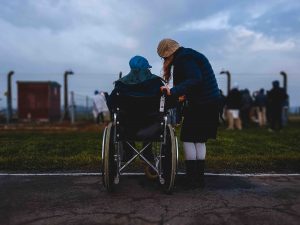Walton Law Firm represented the interests of the family of M.E. (confidential), and elderly woman who suffered from dementia and needed the help with her activities of daily living. She was admitted to a small 12-bed San Diego area assisted living facility in April of 2017. Upon admission, M.E. did not have any bedsores.
M.E’s children began to notice that their mother was never out of her bed when they would visit (which was often). Worse, the family would find M.E. alone in her room with all of the lights turned out, even in the middle of the day. The facility’s administrator first lied to the family, telling the children that their mother was helped out of bed every day. Later, she testified in a deposition that M.E. had experienced a “health crisis” during that time frame and needed to stay in bed (even though the family was unaware of any crisis).
As a result of being left in bed, M.E. developed a bedsore on her coccyx. Within a month, the sore was sized as a Stage III, which disqualified M.E. for assisted living care, and required the facility to discharge her or contact the state for permission to retain her with proper care. Instead of taking action, the administrator actively discouraged the family from taking appropriate action with regard to their mother’s health.
 Southern California Nursing Home Abuse Lawyer Blog
Southern California Nursing Home Abuse Lawyer Blog















